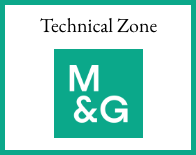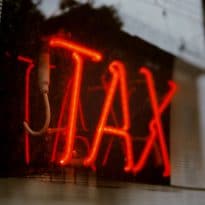Steve Bailey, director of ATEB Consulting, examines the rules around the Lifetime Allowance, when and how the LTA is tested and digs down into when the second LTA test applies, with examples
The Lifetime Allowance (LTA) is the limit below which a person can crystallise benefits from their pension, without being subject to paying a LTA tax charge. Whilst there is no limit on the amount of pension benefits that a person can build up, a LTA tax charge applies when the LTA limit is exceeded.
The current LTA threshold is £1,073,100 and increases every April by the rate of CPI up to September of the previous year.
The tax rate depends on whether the excess is paid as a lump sum – called a Lifetime Allowance excess lump sum and charged at 55% – or if retained to pay pension benefits, charged at 25% (tax is then payable on the income the member receives at their marginal rates)
When is the LTA tested?
There are several ways in which the LTA is tested, and this happens at the point of crystallisation, known as a Benefit Crystallisation Event (BCE).
For drawdown, the tests that typically take place are as follows:
- BCE 1: Where funds are designated to provide a member with a drawdown pension;
- BCE 6: Where the member takes a relevant lump sum.
Therefore, every time funds are designated into drawdown, a LTA test takes place.
The Second Lifetime Allowance Test
However, there are situations where benefits are tested for a second time. For example, when a person designates funds to drawdown, a BCE occurs as outlined above, but, on reaching age 75, a second LTA test takes place.
This means that an individual who is crystallising benefits as a result of investment growth could be subject to a LTA tax charge on the basis of the second test. This second test essentially tests the growth in the fund value since the original funds were designated into drawdown.
The calculation for the second LTA test is as follows:
(Value at age 75 less the amount initially designated into drawdown) x 100 / LTA at the time of the second test = LTA used for tax purposes
For the purposes of the examples below, we have used the ‘shorthand’ version of the LTA calculation, based on percentages and this should produce an approximately correct LTA result. The technically ‘correct’ method for calculating LTA usage described in the legislation requires the past crystallised amount to be indexed at the same rate the standard LTA has been indexed. Where the shorthand method produces a different result, this is due to rounding down of percentages and the result should not be hugely different.
Example 1
- Samson has pension benefits totalling £1m and in October 2016 and crystallises funds of £800,000 when the LTA was £1m, taking £200,000 TFC (BCE 6) and designating £600,000 into drawdown (BCE 1)
- This uses 80% of his LTA i.e. £800,000 / £1m = 80%
- No further funds are taken and in May 2020 he turns 75, with the £600,000 he originally placed into drawdown now worth £800,000
- At age 75, the second drawdown test takes place:
(£800,000 – £600,000 = £200,000) x 100 / £1,073,100 = 18.64%
Samson’s remaining LTA would be 100% – 80% -18.64% = 1.36% of £1,073,100 or £14,594
Samson has £200,000 of uncrystallised funds remaining and would be subject to a LTA charge on £185,406 (i.e. £200,000 – £14,594) at 25%
The LTA tax charge is £46,351
Implications of the second drawdown test
We have seen a few instances where firms recommended crystallising 99% or 100% of the LTA in order to try and mitigate a LTA charge in the future. Firms should be careful when employing this strategy if the sole driver is to mitigate a LTA tax charge, as crystallising 100% of the LTA would mean that no benefit is gained from increases in line with CPI inflation, and the person could still be caught out by the second drawdown test. An example is shown below:
Example 2
- Samson has pension benefits totalling £1m and in October 2016 crystallises the full fund when the LTA was £1m, taking £250,000 TFC (BCE 6) and designating £750,000 into drawdown (BCE 1)
- This uses 100% of his LTA i.e. £1m / £1m = 100%
- No further funds are taken and in May 2020 he turns 75, with the £750,000 he originally placed into drawdown now worth £950,000
- At age 75, the second drawdown test takes place, but as there is no remaining LTA, the full £200,000 growth (i.e. £950,000 – £750,000) is subject to a LTA charge at 25%
- He would therefore be subject to a LTA charge on £200,000 at 25%
- HMRC will deduct £50,000 from Samsons pension
In example 2, the adviser had tried to reduce Samson’s LTA charge by crystallising 100% of his LTA in October 2016. However, this had the opposite effect, as the client did not have any remaining LTA to benefit from the increases in line with CPI. As such, Samson’s LTA charge is effectively £3,649 more in example 2.
Our view
Firm’s should be aware of the challenges facing clients with potential LTA issues, and should take into account the client’s full financial circumstances, including whether they have any transitional protections, before embarking upon a relevant LTA strategy.
We suggest that great care is taken before advisers deliberately embark upon a course of crystallising 100% of client benefits, in an attempt to mitigate future LTA liabilities.




































